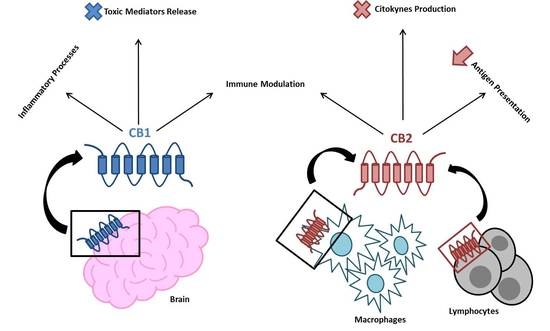 “The monocyclic 1,4-benzoquinone, HU-331, the direct oxidation product of cannabidiol, inhibits the catalytic activity of topoisomerase II but without inducing DNA strand breaks or generating free radicals, and unlike many fused-ring quinones exhibits minimal cardiotoxicity. Thus, monocyclic quinones have potential as anticancer agents, and investigation of the structural origins of their biological activity is warranted. New syntheses of cannabidiol and (±)-HU-331 are here reported. Integrated synthetic protocols afforded a wide range of polysubstituted resorcinol derivatives; many of the corresponding novel 2-hydroxy-1,4-benzoquinone derivatives are potent inhibitors of the catalytic activity of topoisomerase II, some more so than HU-331, whose monoterpene unit replaced by a 3-cycloalkyl unit conferred increased antiproliferative properties in cell lines with IC50 values extending below 1 mM, and greater stability in solution than HU-331. The principal pharmacophore of quinones related to HU-331 was identified. Selected monocyclic quinones show potential for the development of new anticancer agents.”
“The monocyclic 1,4-benzoquinone, HU-331, the direct oxidation product of cannabidiol, inhibits the catalytic activity of topoisomerase II but without inducing DNA strand breaks or generating free radicals, and unlike many fused-ring quinones exhibits minimal cardiotoxicity. Thus, monocyclic quinones have potential as anticancer agents, and investigation of the structural origins of their biological activity is warranted. New syntheses of cannabidiol and (±)-HU-331 are here reported. Integrated synthetic protocols afforded a wide range of polysubstituted resorcinol derivatives; many of the corresponding novel 2-hydroxy-1,4-benzoquinone derivatives are potent inhibitors of the catalytic activity of topoisomerase II, some more so than HU-331, whose monoterpene unit replaced by a 3-cycloalkyl unit conferred increased antiproliferative properties in cell lines with IC50 values extending below 1 mM, and greater stability in solution than HU-331. The principal pharmacophore of quinones related to HU-331 was identified. Selected monocyclic quinones show potential for the development of new anticancer agents.”
https://www.ncbi.nlm.nih.gov/pubmed/31778038
https://onlinelibrary.wiley.com/doi/abs/10.1002/cmdc.201900548

 “Endocannabinoid system consists of
“Endocannabinoid system consists of 
 “As we learn more about the endocannabinoid system (ECS), our understanding and grasp of the system’s ubiquitous presence is expanding. In light of this, there is also a growing body of evidence for the therapeutic potential of ECS modulation in a range of clinical situations. Strategies include for example manipulation of the
“As we learn more about the endocannabinoid system (ECS), our understanding and grasp of the system’s ubiquitous presence is expanding. In light of this, there is also a growing body of evidence for the therapeutic potential of ECS modulation in a range of clinical situations. Strategies include for example manipulation of the  “Drug-resistant seizures are life-threatening and contribute to sustained hospitalization.
“Drug-resistant seizures are life-threatening and contribute to sustained hospitalization. “Hepatorenal syndrome (HRS) is a life-threatening complication of end-stage liver disease characterized by the rapid decline of kidney function. Herein, we explored the therapeutic potential of targeting the
“Hepatorenal syndrome (HRS) is a life-threatening complication of end-stage liver disease characterized by the rapid decline of kidney function. Herein, we explored the therapeutic potential of targeting the 
 “Uncontrolled infection and increased inflammatory mediators might cause systemic inflammatory response. It is already known that
“Uncontrolled infection and increased inflammatory mediators might cause systemic inflammatory response. It is already known that  “Interstitial cystitis (IC) is a chronic bladder disorder with unclear etiology.
“Interstitial cystitis (IC) is a chronic bladder disorder with unclear etiology. “The endocannabinoid system (ECS) is comprised of cannabinoid receptors 1 and 2 (CB1R and CB2R), endogenous ligands, and regulatory enzymes, and serves to regulate several important physiological functions throughout the brain and body.
“The endocannabinoid system (ECS) is comprised of cannabinoid receptors 1 and 2 (CB1R and CB2R), endogenous ligands, and regulatory enzymes, and serves to regulate several important physiological functions throughout the brain and body. “The functions of the glycine receptor (GlyR) and γ-aminobutyric acid type A receptor (GABAAR) are both impaired in hyperekplexia, a neurological disorder that is usually caused by GlyR mutations.
“The functions of the glycine receptor (GlyR) and γ-aminobutyric acid type A receptor (GABAAR) are both impaired in hyperekplexia, a neurological disorder that is usually caused by GlyR mutations.